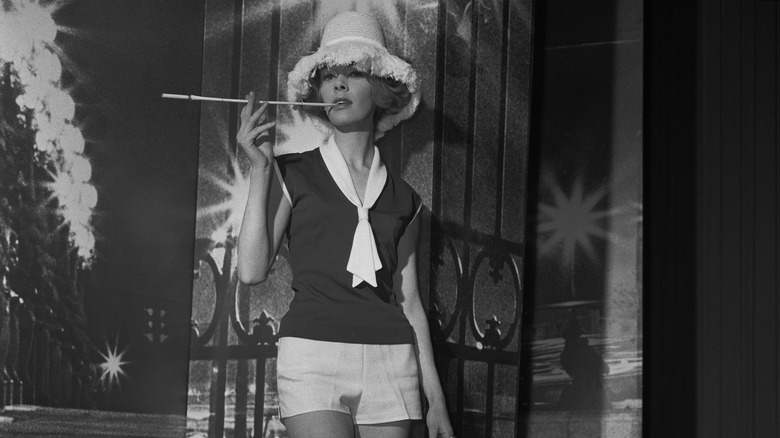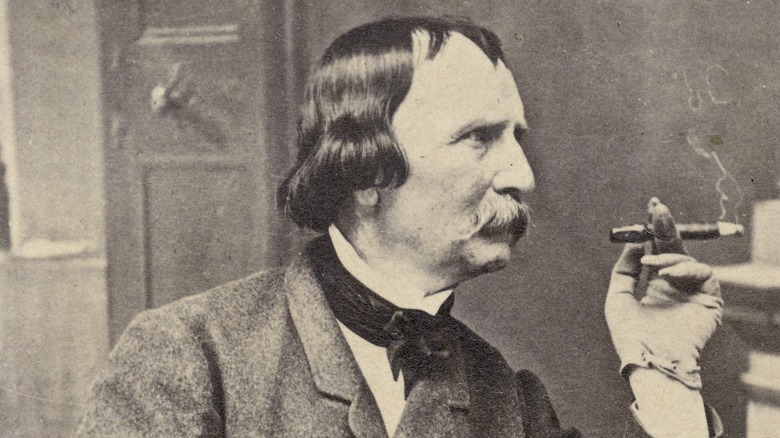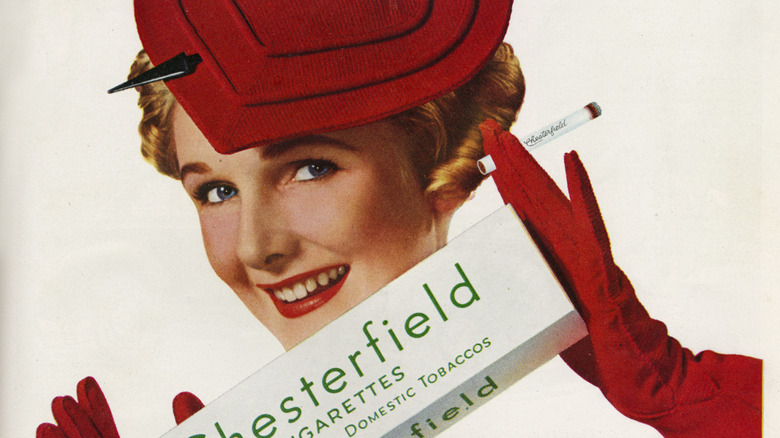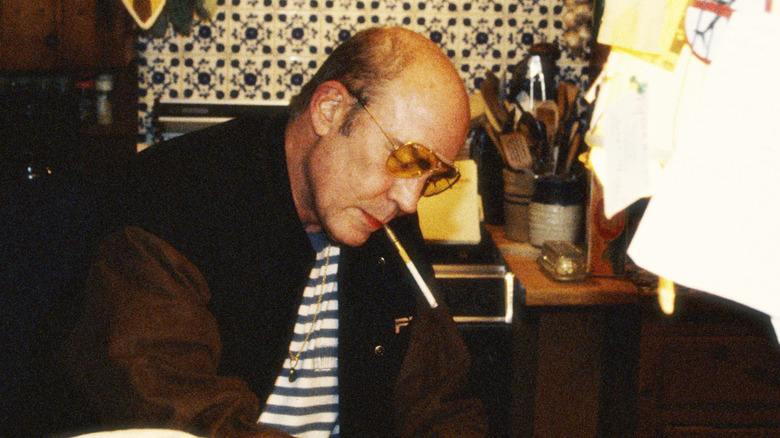What Happened To Cigarette Holders?
These days, smoking is considered a disgusting and dangerous habit that is to be avoided. In fact, even the federal government has been spending decades trying to convince Americans to kick the habit or not start it to begin with. Similarly, private enterprises, such as the American Cancer Society, are all about seeing smoking become a thing of the past.
A century ago, things were considerably different. Almost any well-respected gentleman or lady smoked, as The Guardian reports, and by 1950, half of the population of the industrialized world had a fondness for cancer sticks. Before we learned about the health hazards of smoking, even doctors smoked — sometimes in the operating room, according to Working Nurse.
For a time, the ultimate fashion accessory for a woman (and sometimes a man) who smoked was the cigarette holder, as seen above. However, right about the same time that smoking, in general, started decreasing in popularity, so, too, did the cigarette holder. Today, they're still sold, albeit mostly as either cosplay props or art pieces.
Cigars versus cigarettes
According to the New South Wales Cancer Council, Europeans cottoned onto the idea of using tobacco after the Columbian Exchange, and soon enough, men — and only men — were smoking cigars, dipping tobacco, or using snuff. During this time, it was all but unheard of for a woman to use tobacco, not because of our knowledge of the dangers to women's health from tobacco use, but because of social stigmas. Indeed, women who used tobacco were largely seen as saloon girls, sex workers, or reprobates.
By the middle of the 19th century, the tobacco industry had created machines that could manufacture cigarettes quickly, compared to the painstaking and laborious process of hand-rolling cigars. That opened up a new market for tobacco products, although it would be a few decades before the social stigma of women using tobacco would go away — and it took the help of the tobacco industry to make that happen.
Marketing to women
So ingrained into the public consciousness was the idea that women shouldn't smoke that by the turn of the 20th century, some cities even had laws against it. Notably, a woman was arrested in New York City in 1908 for smoking in public (per an article in Tobacco Control). After World War I, some of the barriers between men and women started to fall here and there. For example, women started wearing pants, playing sports, and cutting their hair. And the tobacco industry saw dollar signs in this social trend: they set about to convince women and men that it was OK to smoke.
As Truth Initiative reports, the industry went after marketing cigarettes to women with reckless abandon, often tying their marketing to the concept of liberating or — at the very least — helping women. For example, in the early 1920s, Lucky Strike played on the fears of women about their weight by suggesting that a smoke was preferable to a snack: "Reach for a lucky instead of a sweet," the slogan read. Similarly, in 1929, the American Tobacco Company organized a protest of sorts, where women marched through the heart of New York City carrying "freedom torches," which were cigarettes (per Truth Initiative). A few decades later, in the late 1960s, Virginia Slims latched onto the ideas of women's liberation, a major social movement at the time, via the slogan, "You've come a long way, baby!"
Cigarette holders weren't just props
Once women began smoking, they quickly noticed that cigarette smoking presented them with problems that men didn't have to deal with when they smoked. As The Lady Smokes notes, cigarette holders became popular because they solved many of those problems. Specifically, while men wore smoking jackets, women did not, and the inches-long devices kept the ashes from falling on their dresses. Further, women's hats had wider brims than men's, and the smoke would coalesce under the brims and in the user's eyes; keeping the cigarette several inches further away solved that problem as well.
The devices also provided other benefits that weren't limited to just women. For example, they kept tobacco flakes from falling into the smoker's mouth, kept bits of the paper wrapper from adhering to the user's lips, and cooled and slightly mellowed the smoke. Further, they prevented nicotine stains on the fingertips. For these reasons and others, some men used them, too.
Some men used them, too
As mentioned above, cigarette holders provided benefits for both men and women, and although they were largely used by women, some male smokers used them too. For example, "gonzo journalist" Hunter S. Thompson (pictured above) was rarely seen or photographed without a cigarette holder in his mouth and a smoking cigarette at the end. As TarGard notes, he used it strictly as a filter. Similarly, according to the Public Policy Institute at Hunter College, Franklin Delano Roosevelt, believed to be a pack-a-day smoker, was rarely seen without a cigarette plugged firmly into the end of his cigarette holder. Other well-known men who were oft seen with a cigarette holder include James Bond novelist Ian Fleming (via A Suitable Wardrobe) and Yugoslavian dictator Marshal Josip Broz Tito (per British Pathe).
Of course, there were fundamental differences between men's cigarette holders and women's. As Antique Jewelry University explains, men's holders were usually shorter than women's; about 4 inches for men's, while women's models could exceed 1 foot in length. In addition, Men's holders were generally more functional and less flashy than women's.
Filtered cigarettes and changing attitudes
Although people were warning about the dangers of tobacco use as early as 1602 (per New South Wales Cancer Council), it wasn't until the 1950s that the health effects of using tobacco came to be better understood. As the Centers for Disease Control and Prevention reports, since that time, smoking in the U.S. has decreased considerably, with only 13 percent of American adults now smoking, as opposed to nearly 50 percent a few decades ago. Further, smoking developed a sort of social stigma in this time. As such, with fewer people smoking and fewer people using smoking's most visible prop, the cigarette holder began going the way of the Model T.
Of course, the beginning of the end for cigarette holders likely came in the 1950s. That's when filtered cigarettes started becoming popular, and the new smokes solved several of the problems that cigarette holders did (per The New York Times). Namely, they cool and mellow the smoke, capture (some of) the tar produced by the burning tobacco, and keep the paper wrappers from adhering to the user's mouth.
Cigarette holders still exist, but these days, they appeal to one of two extremely niche demographics: the modern smoker who's looking for a cool, retro fashion accessory; and people in theatre or who want to cosplay as a character who would use such a thing.





